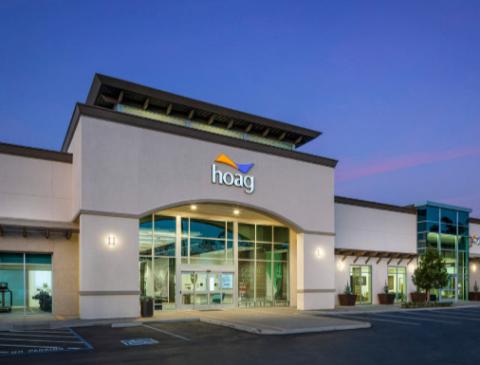New uses clamor to fill empty anchor space in California

Private and institutional capital has flooded the retail market in 2022. Deals between First Washington Realty and Donahue Schriber, Kimco Realty Corp. and Weingarten Realty Investors, and Shopcore Properties and Merlone Geier Partners have made one thing clear – box anchor space is nothing to fear when it’s a central component of daily-needs shopping center.
In the years following the Great Recession, the long-term stability of any space over 20,000 sq. ft was a major concern for investors. Vacancies seemed to increase annually as dated concepts closed their doors, unable to keep up with a changing retail landscape. Flash forward to 2020 and the pandemic pushed neighborhood shopping centers, and their 20,000-40,000-sq.-ft. anchors, back into the spotlight. This essential retail asset type, most notably anchored by grocers, has sustained strong growth with no signs of slowing down.
In Southern California, medical centers, gyms, pet services and other new uses are supporting new development and the repositioning of older centers. In Orange County alone, more than 1.1 million sq. ft. of box vacancy has been absorbed since 2020, and leasing activity is expected to remain strong for the remainder of the year.
Which are the tenants actively looking for anchor space?
The specialty grocer category has grown by 2% year-over-year since 2017, each brand targeting a niche audience, differentiating itself from traditional grocers. With detailed demographic data, these retailers fully understand their customers, best locations, most efficient store formats, and ideal square footages. Led by the likes of Sprouts and Northgate Market, specialty grocers are an $11 billion U.S. industry and are making a significant impact on the Southern California landscape.
Asian specialty grocer 99 Ranch Market has focused on expanding within suburban markets and is actively pursuing deals in South Orange County. Targeting 40,000-sq.-ft. spaces, the grocer is also considering smaller 20,000-sq.-ft. formats in established communities. Korean-American grocer H Mart, meanwhile, has focused its recent expansion on larger 60,000-sq.-ft. sites within which it can offer a full-line of Asian foods and a broad range of Western groceries. In 2021, the brand opened two locations in Irvine that used to house Albertsons.
Deep Discounters and Alternatives
Deep discounters disrupt any retail category. The continued expansion of Aldiand GroceryOutlet are just the latest to take advantage of available space, targeting savvy customers searching for bargains amid rising inflation.
Aldi carefully evaluated the U.S. market for a number of years before making its first move. With nearly 100 stores in California now, ranging between 15,000 and 20,000 sq. ft., the brand is looking to add 120 new locations nationwide in 2022. The grocer will pursue stand-alone buildings or in-line space within larger centers. Amazon Fresh, which opened its first Southern California location in 2020, and has since expanded to 16 in the region. The novelty of this digitally integrated store attracts customers who also seek to take advantage of intensely competitive pricing.
Owners, prospective investors, and municipalities have all begun to embrace alternative uses as neighborhood center anchors, as well, with health and fitness proving to be among the most successful integrations. Gold’s Gymhas taken advantage of vacant boxes to satisfy its 40,000-sq. ft. requirement. In Cerritos Plaza in California, Gold’s backfilled a former OSH Home Improvement store and gained local approval as a strong complementary co-anchor to Ralphs and CVS.
In 2020, a 40,000-sq.-ft. Hoag Health Center backfilled a former Jo-Ann’s Fabrics at Foothill Ranch Town Center. This innovative concept introduced a comprehensive medical destination, complete with fitness, food, education, and medical facilities inside this community shopping center.
The viability of medical anchors has also extended into the veterinary industry which alone has experienced 4% annual growth during this pandemic era. Coreland’s leasing team negotiated a 10-year deal with high-end pet hospital, Pet Rise. The new concept will absorb a 20,000-sq.-ft. anchor space in Laguna Hills, Calif., and expects to draw patients from a 10 to 15-mile radius.
The Traditional
Rising labor costs, fuel costs, and shipping and delivery constraints have impacted traditional neighborhood center anchors like Ralphs, Vons and Albertsons. However, even players within this segment have seen expansion and growth.
Stater Bros. is one of the best examples of an expanding traditional grocer. Having opened its very first store in the midst of the Great Depression in Yucaipa, Stater Bros. has remained connected to the Inland Empire and has targeted growing communities and vibrant new developments. A 45,000-sq.-ft. Stater Bros now anchors Ontario’s New Haven Marketplace, which features quick-service restaurants, local services, yoga, and fitness. At The Groves Whittier, a new 44,000-sq.-ft. Stater Bros replaced its former location on Whittier Boulevard and will set the stage for the complementary uses that will include retail, fitness, food, and integrated public market.





